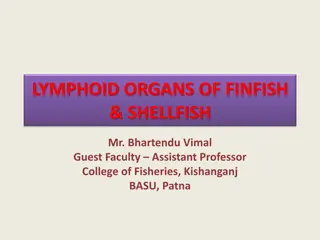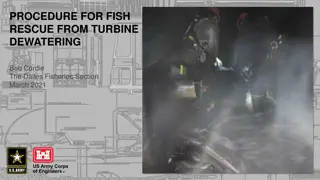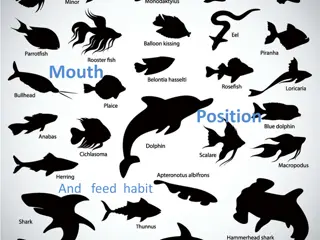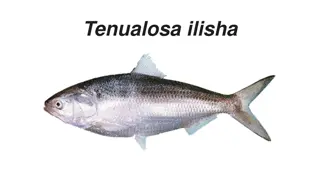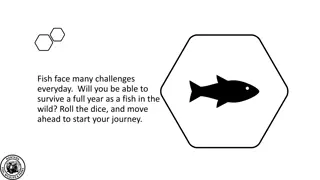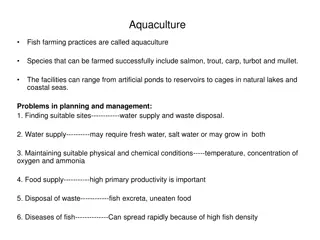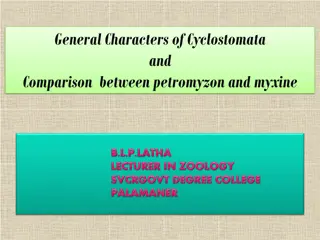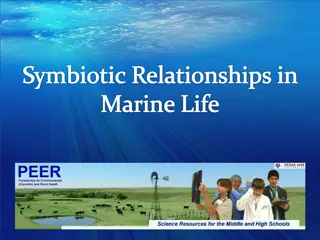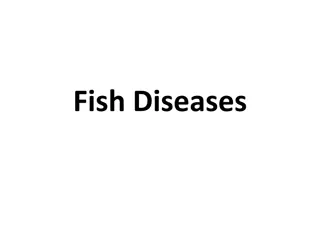Overview of Agnatha: Jawless Fish in Chordata
Agnatha, the superclass of jawless fish in the phylum Chordata, includes both present (cyclostomes) and extinct species. Cyclostomes, such as lampreys and hagfishes, lack jaws and have unique adaptations. They have primitive characteristics like a circular mouth and lack of paired fins, alongside specialized features. General traits include a long, eel-like body, a soft and scale-less skin, and a two-chambered heart. These jawless vertebrates have a true coelom and unique skeletal structures. Their evolutionary history dates back to the Devonian period.
Download Presentation

Please find below an Image/Link to download the presentation.
The content on the website is provided AS IS for your information and personal use only. It may not be sold, licensed, or shared on other websites without obtaining consent from the author. Download presentation by click this link. If you encounter any issues during the download, it is possible that the publisher has removed the file from their server.
E N D
Presentation Transcript
Agnatha Agnatha Agnatha, (Ancient Greek 'without jaws') is a superclass of jawless fish in the phylum Chordata, subphylum Vertebrata, consisting of both present (cyclostomes) and extinct (conodonts and ostracoderms) species. Among recent animals, cyclostomes are sister to all vertebrates with jaws, known as gnathostomes.
AGNATHA GNATHOSTOMATA Their mouths lack jaws. Jaws are present in their mouth. It comprises most of the primitive craniates It comprises the advanced vertebrates. Exoskeleton and appendages are absent in them. Paired appendages (fins and limbs are present). It includes cold-blooded animals These include both cold-blooded as well as warm- blooded animals . Notochord is present throughout life. In the embryonic stage, the notochord is present while in adults it is replaced by the vertebral column.
The Cyclostomata (Gr., cyklos = circular + stoma = mouth) are the living agnathans, they are primitive in many respects, but specialised in others. They are a modified and degenerate offshoot of the primitive vertebrate stalk, arose in the Devonian. In the adult state they are parasitic or scavengers on fishes Cyclostomata is a group of chordates that comprises the living jawless fishes: the lampreys and hagfishes. Both groups have round mouths that lack jaws but have retractable horny teeth. The name Cyclostomata means "round mouths".Their mouths cannot close due to the lack of a jaw, so they have to constantly cycle water through the mouth.
GENERAL CHARACTERS OF CYCLOSTOMATA Cyclostomes are jawless primitive vertebrates. They may be marine or fresh-water. They include hag fishes and lampreys. The body is long, eel like. It has a trunk and a compressed tail. Paired fins are absent. Median fin is supported by cartilaginous fin- rays. The skin i.e soft and smooth. It is slimy. It is scale less. Z- shaped myomeres are present in the trunk and tail Protractor and retracstor muscles to move the tongue.
In this group a true coelom is seen. These vertebrates do not have jaws, hence called Agnatha. The mouth is circular. It works like a sucker and is surrounded by tentacles. Tongue bears teeth. Stomach is absent and oesophagus leads into the intestine. Endoskeleton is present. Skull is simple and primitive. Notochord persists throughout life. Vertebrae are represented by neural arches, around the notochord. Five to sixteen pairs of gills are present in sac like pouches The heart is two chambered. Sinus venosus is present, Blood contains leucocytes and Irregular nucleated erythrocytes..
Brain is seen. Ten pairs or less number of cranial nerves are present. Nasal sac is single and median. Lateral line sense organ is present. The tail is protocercal in cyclostomes, having a caudal fin extending around the end of the vertebral column. The protocercal tail is formed by the division of tail into two equal lobes supported by fins. Excretory system includes a pair of mesonephric kidneys. Sexes are separate. Gonad is single and without a gonoduct. Development may be direct or with a long larval stage.
CLASSIFICATION The class Cyclostomata is divided into two orders: Order 1: Petromyzontiformes (Gr., petros = stone; myzon = suck): Order 2: Myxiniformes (Gr., myxa = slime; oidea = type of):
Order Petromyzontiformes This includes Lampreys. The buccal funnel is suctorial and shows horny teeth. The mouth is present in the buccal funnel. The nasal sac is dorsal. It has no connection with the pharynx. Eyes are functional. Seven pairs of gill slits are present. A well-developed dorsal fin is present. Branchial basket is complete. Brain is well developed. Pineal eye is well developed. Ear has two semicircular canals. Development is indirect through Ammocoete larva Ex: 1. Petromyzon sp. (Sea-lamprey), Ichthyomyzon sp.
Order : Myxiniformes It includes the hag-fishes or slime eels. Buccal funnel is absent. The nasal sac opens into pharynx through a canal. Eyes are vestigial. Dorsal fin is absent or very small. Branchial basket is poorly developed. Brain is primitive. Pineal eye is reduced. Ear has only one semicircular canal. Development is direct. The hag-fishes are all marine. Example: Myxine sp.; Bdellostoma sp.
Characters More Primitive Than In Fishes (Differences From Fishes) 1. No biting jaws, hair, true teeth, actual fin rays, girdles, ribs, stomach, spleen, and products. 2. The median dorsal fin is continuous. 3. Caudal fin diphycerclic. 4. Median single nostrils, instead of paired. 5. Incomplete or badly formed cranium. 6. No vertebrae, or vertebrae with weak growth.
7. Pancreas which is rudimentary. 8. No spinal valve in the intestine, or even a poorly formed spiral valve.9. Brain relatively small or generalized. 10. Ninth and tenth cranial nerves which are not in the cranium. Lack of medulated nerves. 11. Rather weak and poorly developed Sympathetic Nervous System. 12. Heart a rather loosely twisted S-shaped tube,. 13. Poorly developed lateral organs and in isolated pits. 14. A very broad hypophysial duct, exposed to the outside and not attached to the pituitary gland.



